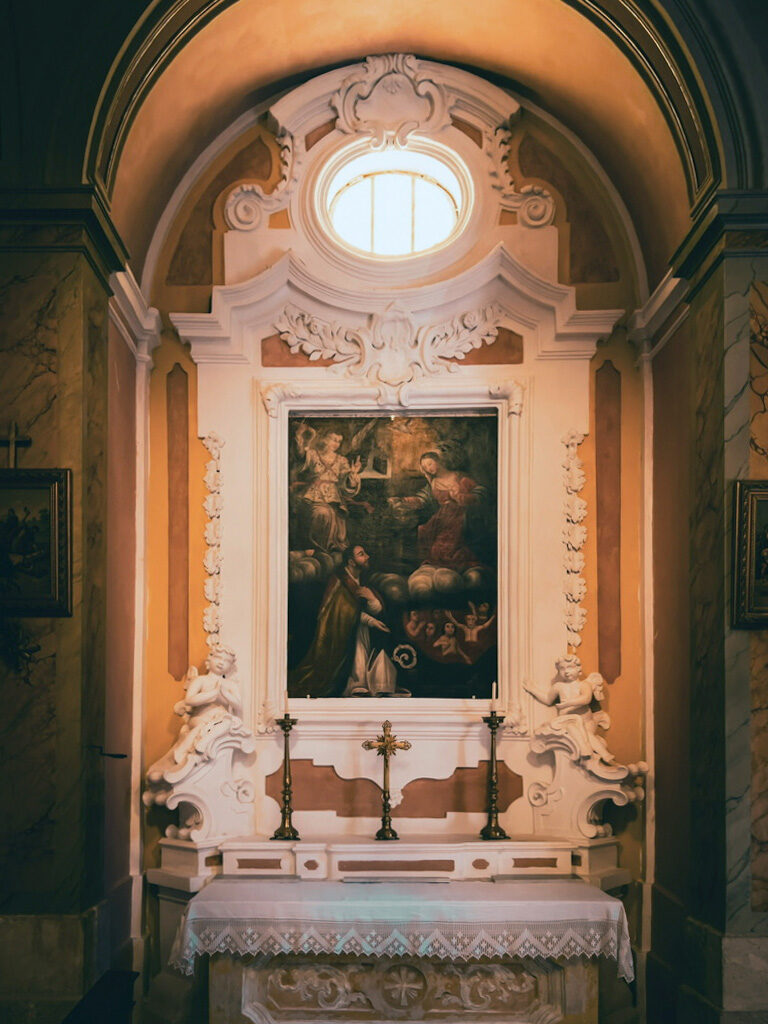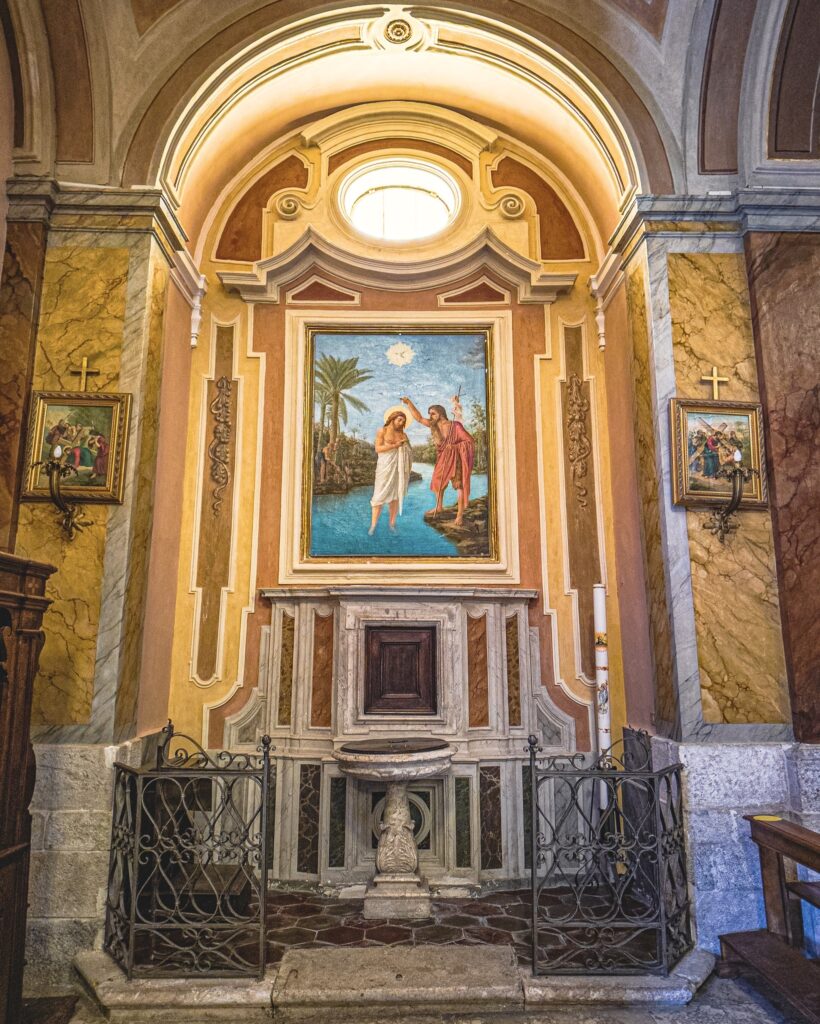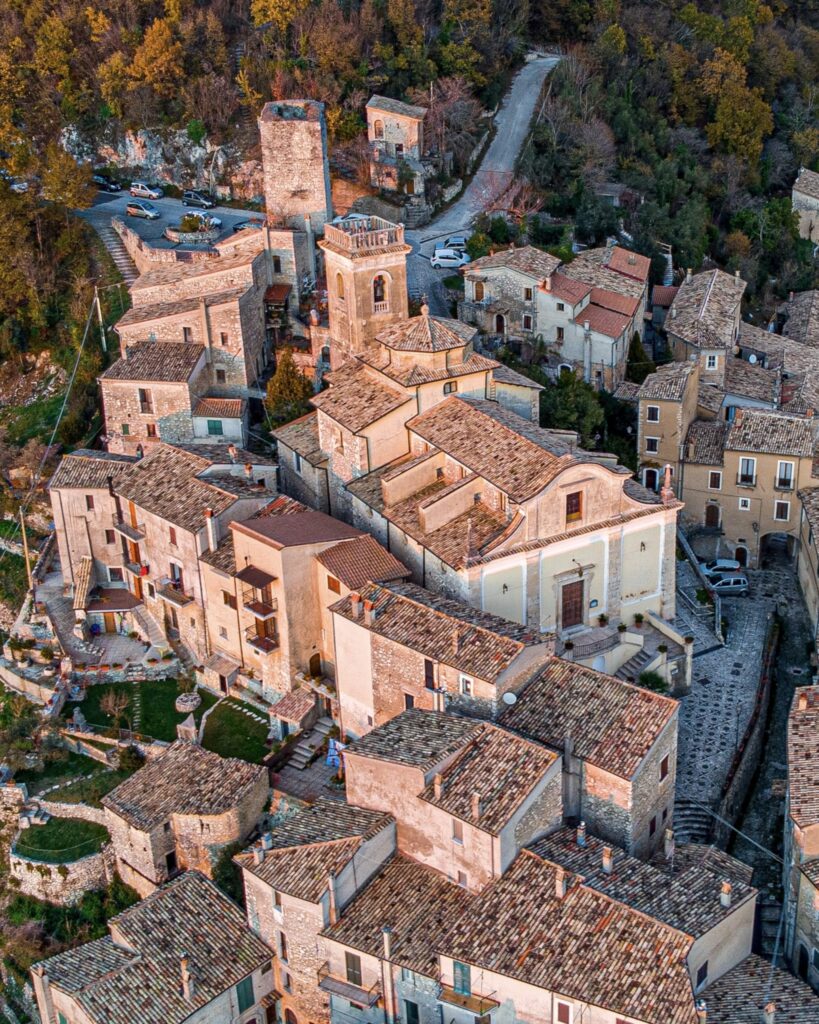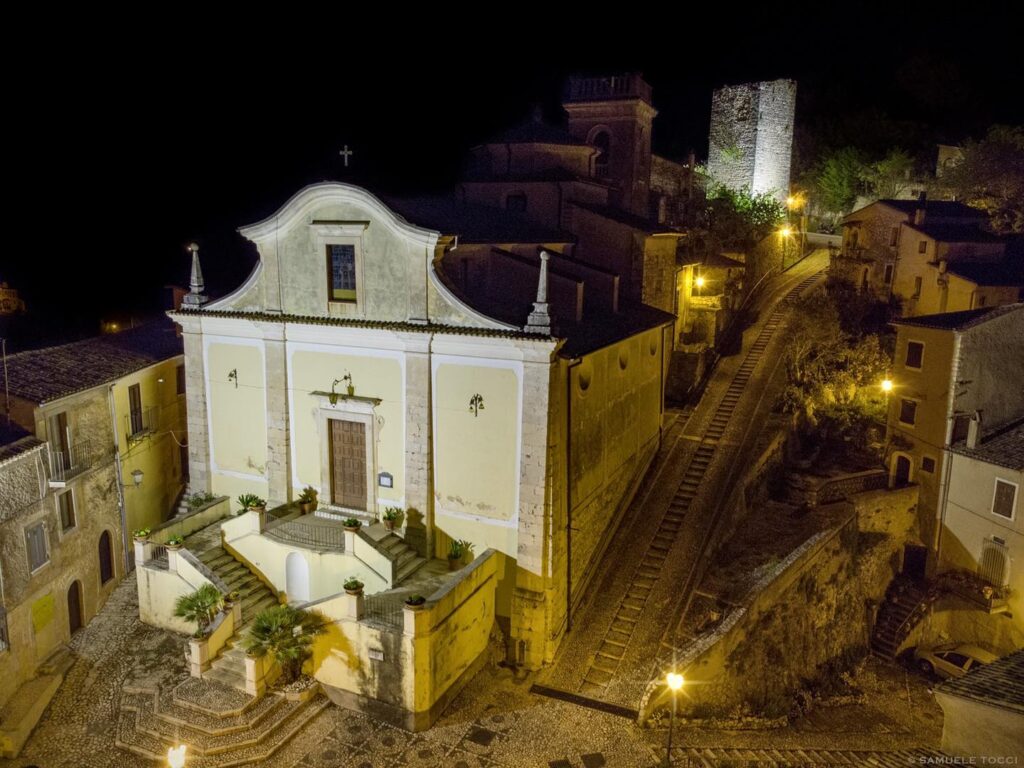Shrine of St. Donatus Bishop and Martyr
Church, Historical landmark
Owned by the Lombard duchy of Spoleto, in 778 it was ceded to the Benedictines of the abbey of San Vincenzo al Volturno. With the spread of the cult of St. Donatus of Arezzo, the fame of this shrine grew considerably, becoming a destination for thousands of pilgrims.
During the 16th century, the inhabitants of the Rione Castello began restoration and expansion work: the interior has three naves, and the vaults are decorated with stucco, friezes and gilding. The frescoes were painted by Gaspare Capricci in the 18th century and summarize the main events in the life of the Aretine saint: the healing of a possessed man and the blind woman Siranna, the martyrdom, and the glory of St. Donatus.
On the doorway, on the counter façade, the painting dedicated to Jesus driving the merchants out of the temple is worthy of attention. The scene has a strong symbolic value as an imperishable warning not to turn the shrine into a place of commerce: until a few decades ago, on the occasion of the patronal feast, the surroundings of the church were the scene of a massive fair, involving vendors from all over.
In 1915 the building was restored 1915 by the artist Fiorini of Sora, under the guidance of Canon Luigi Ippoliti, the author of the popular hymn of San Donato.
The cult of St. Donatus of Arezzo is one of the oldest in the Comino Valley. A native of Arezzo, Donatus lived between the third and fourth centuries. Donatus' episcopal activity was long and missionary, for he acted during a period of fierce persecution and harsh repression. Through his work and intercession numerous miracles flourished. Arrested for preaching the Gospel and converting numerous pagans, St. Donatus, after being subjected to numerous tortures, was beheaded on August 7, 304. Every year, thousands come to the shrine in search of miracles, because St. Donatus is an intercessor for heartache, "moon sickness," and epileptic afflictions, vulgarly called "St. Donatus' disease."
During the 16th century, the inhabitants of the Rione Castello began restoration and expansion work: the interior has three naves, and the vaults are decorated with stucco, friezes and gilding. The frescoes were painted by Gaspare Capricci in the 18th century and summarize the main events in the life of the Aretine saint: the healing of a possessed man and the blind woman Siranna, the martyrdom, and the glory of St. Donatus.
On the doorway, on the counter façade, the painting dedicated to Jesus driving the merchants out of the temple is worthy of attention. The scene has a strong symbolic value as an imperishable warning not to turn the shrine into a place of commerce: until a few decades ago, on the occasion of the patronal feast, the surroundings of the church were the scene of a massive fair, involving vendors from all over.
In 1915 the building was restored 1915 by the artist Fiorini of Sora, under the guidance of Canon Luigi Ippoliti, the author of the popular hymn of San Donato.
The cult of St. Donatus of Arezzo is one of the oldest in the Comino Valley. A native of Arezzo, Donatus lived between the third and fourth centuries. Donatus' episcopal activity was long and missionary, for he acted during a period of fierce persecution and harsh repression. Through his work and intercession numerous miracles flourished. Arrested for preaching the Gospel and converting numerous pagans, St. Donatus, after being subjected to numerous tortures, was beheaded on August 7, 304. Every year, thousands come to the shrine in search of miracles, because St. Donatus is an intercessor for heartache, "moon sickness," and epileptic afflictions, vulgarly called "St. Donatus' disease."
Do you want to visit this attraction?
Book your vacation now.
Shrine of St. Donatus Bishop and Martyr,
L.go S. Donato,
snc,
03046 San Donato Val di Comino FR,
Italy
-
L.go S. Donato, snc, 03046 San Donato Val di Comino FR, Italy
Details
Suitable for
- Childrens, Couples, Families, Groups, Solo travelers
Best season to go
- All the seasons
Duration / time of visit
- Up to 1 hour
Type of tour
- This attraction is part of a guided tour, Small groups tour, Solo tour, Private tour, Virtual tour
Are audio guides provided?
- Yes, upon request
Available languages
- English, Italian
Ticket price
- Does not require a ticket








































